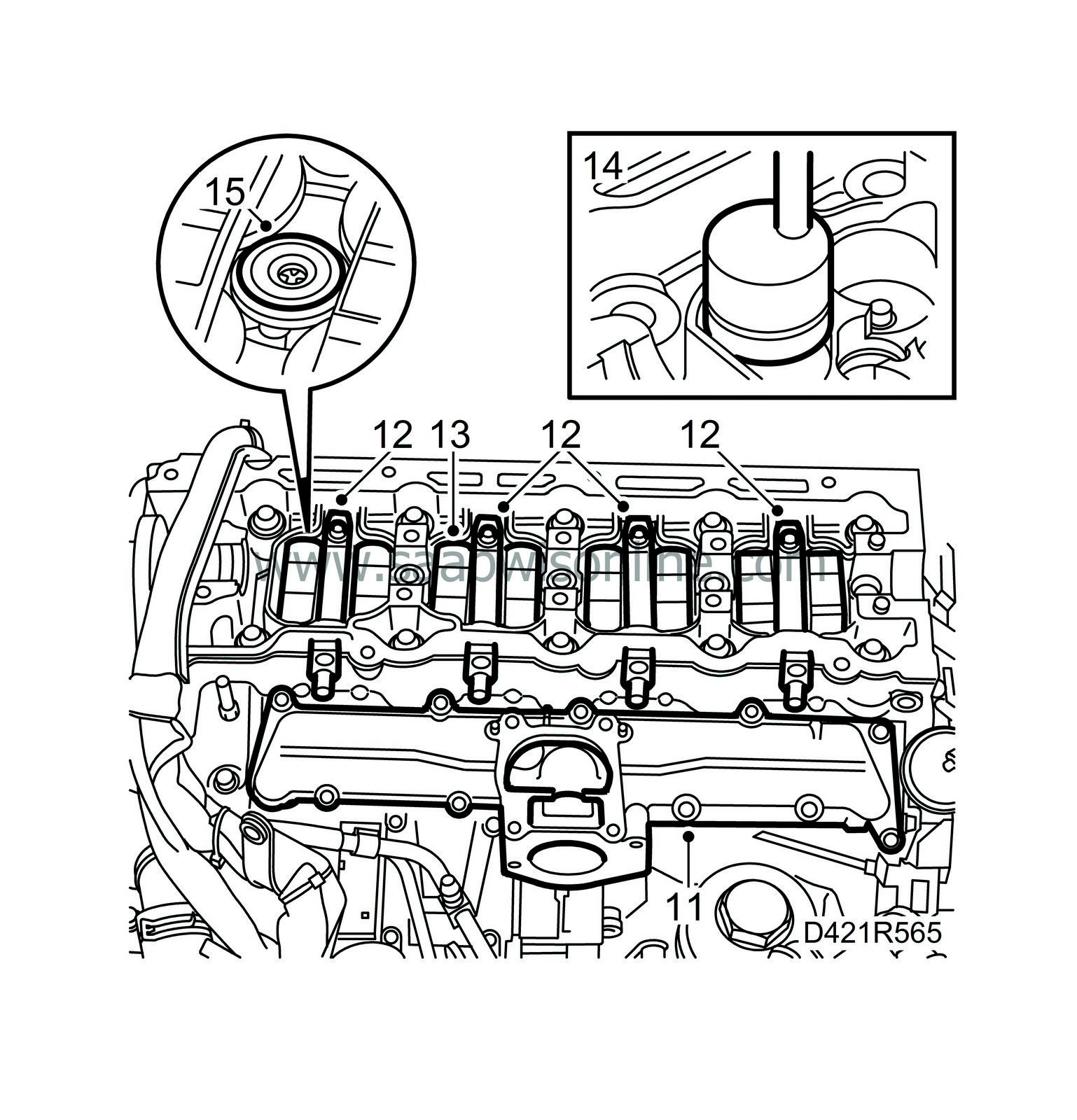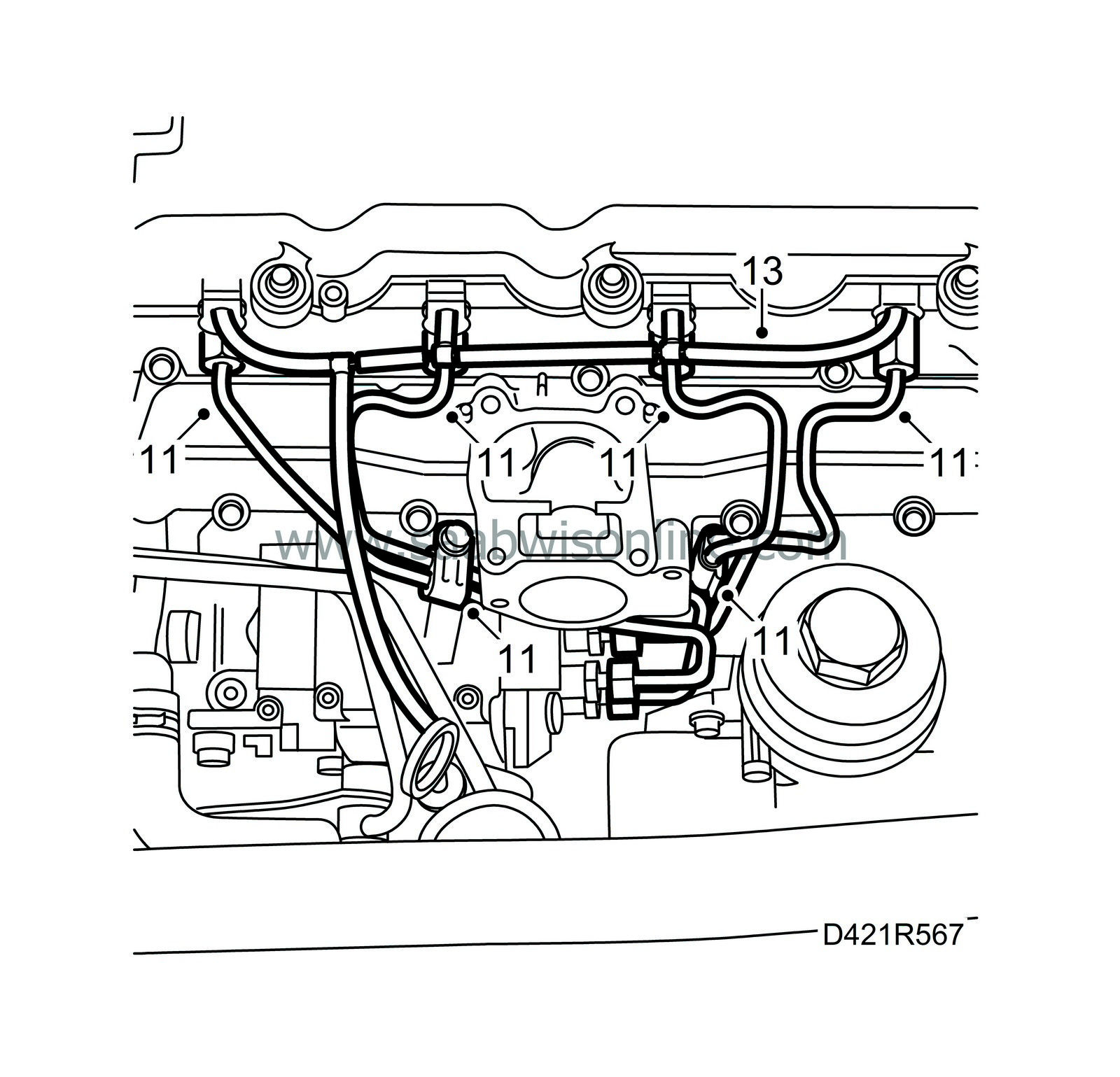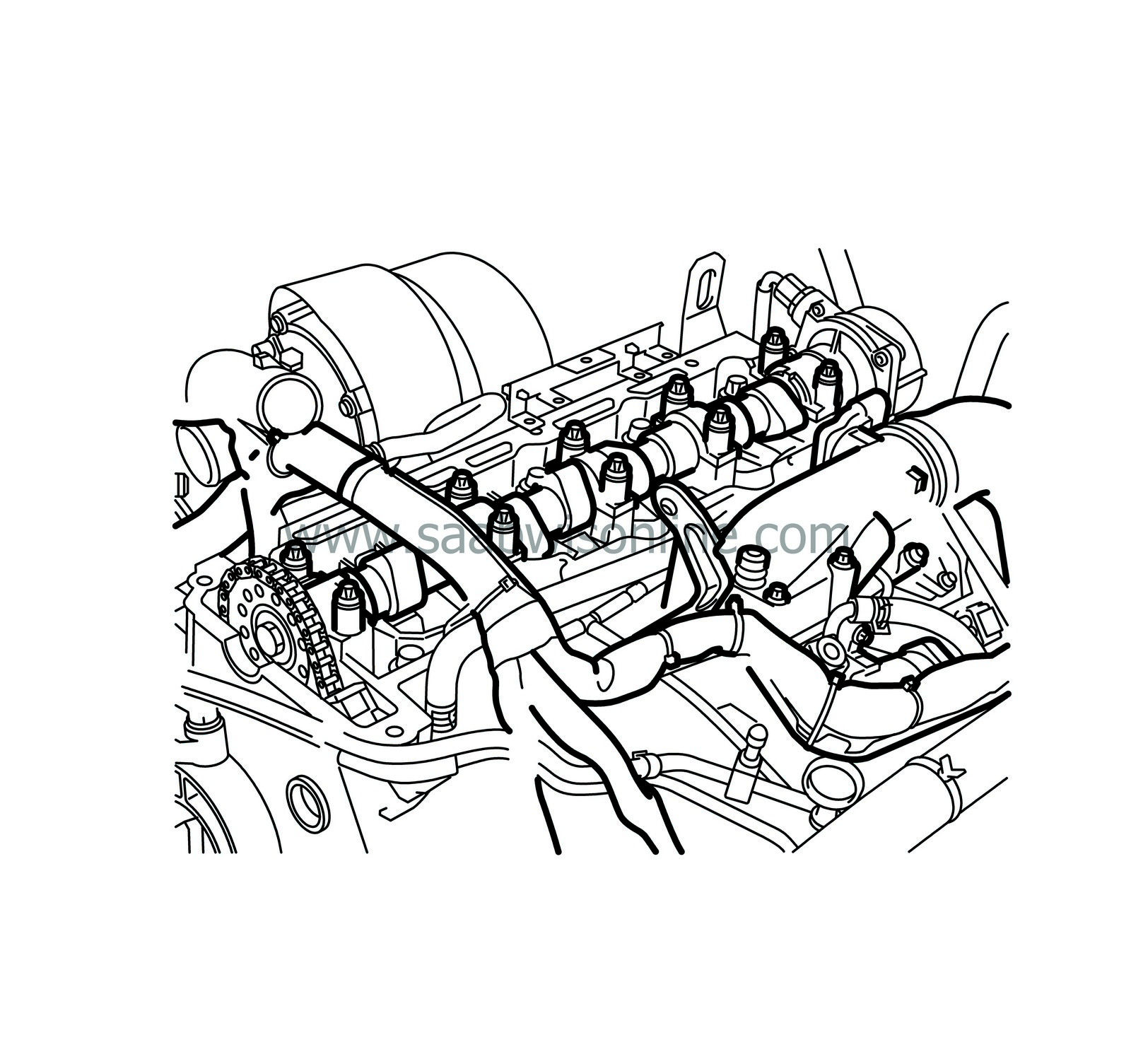Tappets
| Tappets |
| To remove |
|
||||||||||||||||||||||
| 1. |
Remove the camshaft, see
Camshaft,

|
|
| 2. |
Vacuum up any oil on top of the cylinder head.
|
|
| 3. |
Detach the air hose from the throttle body. Bend it to one side and plug it.
|
|
| 4. |
Bend aside the wiring harness duct.
|
|
| 5. |
Unplug the EGR valve.
|
|
| 6. |
Remove the throttle body.
|
|
| 7. |
Remove the bolts securing the EGR valve and move the valve to one side.
|
|
| 8. |
Remove the fuel return hoses
|
|
| 9. |
Note the position of the fuel rails and their clamps, and mark the rails.

|
|
| 10. |
Remove the fuel rails (the clamps can be removed if necessary).
|
|
| 11. |
Remove the upper part of the intake manifold and seal the passageways.

|
|
| 12. |
Remove the retaining screws for the fuel bridges, lift the fuel bridges and pull them out of the cylinder head.
|
|
| 13. |
Remove the valve bridges.
|
||||||||||
| 14. |
Lift up the valve tappets with
83 91 401 Magnetic tool
.
|
|
| 15. |
Remove the seals on the injector connections in the cylinder head.
|
|
| To fit |
| 1. |
Clean all removed parts and inspect for wear. Change if necessary.
|
|
| 2. |
Fit new seals on the injector connections in the cylinder head.

|
|
| 3. |
Lubricate the valve tappets with engine oil and position them on the cylinder head.
|
|
| 4. |
Blow the holes for the fuel bridge retaining bolts clean.
|
|
| 5. |
Fit new O-rings on the fuel bridges, lubricate the O-rings with acid-free vaseline and slide the fuel bridges into the cylinder head.
|
|
| 6. |
Tighten the fuel bridge retaining bolts by hand using a socket and extension piece. Then use a ratchet handle to tighten them a further 360°.
|
|
| 7. |
Fit the valve bridges.
|
||||||||||
| 8. |
Clean the sealing surfaces.
|
|
| 9. |
Fit a new gasket on the lower part of the intake manifold and fit the upper part.
Tightening torque 10 Nm (7 lbf ft). |
|
| 10. |
Check the fuel rail connecting cones and replace if necessary.
|
|
| 11. |
Attach the fuel rails with clamps in their original positions.
Tightening torque 25 Nm (19 lbf ft) 
|
|
| 12. |
Check the condition of the fuel return hoses and joints and replace if necessary.
|
|
| 13. |
Connect the fuel return hoses to the fuel bridges. Detach the fuel return hose from the fuel pump and connect the hose to
30 14 883 Pressure/vacuum pump
. Create a vacuum of 750 mbar and wait 1 minute. Check that the pointer on the tool has not moved.
If there is found to be a leak, the fuel bridges must be examined individually. Connect the pressure/vacuum pump to the return fuel connection (not to the return hose) on each fuel bridge. If the fuel bridges are OK, check the return fuel hoses and T-pieces. The hoses should be pliable and exhibit no cracks or other damage. If there are signs of leakage, change all fuel return hoses and T-pieces. If a fuel bridges leaks, remove it, change the seal and refit the bridge. Check for leakage once again. |
|
| 14. |
Fit the EGR valve and the throttle body.
Tightening torque, throttle body: 10 Nm (7 lbf ft) 
|
|
| 15. |
Fit the wiring harness duct to the engine. Plug in the EGR valve.
|
|
| 16. |
Secure the wiring harness as it was previously.
|
|
| 17. |
Refit the hose on the intake manifold.
|
|
| 18. |
Fit the camshaft, refer to
Camshaft
|
|

 Warning
Warning

